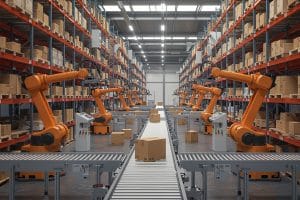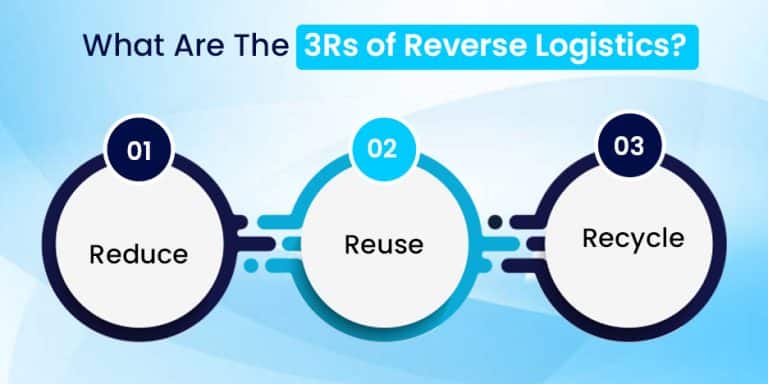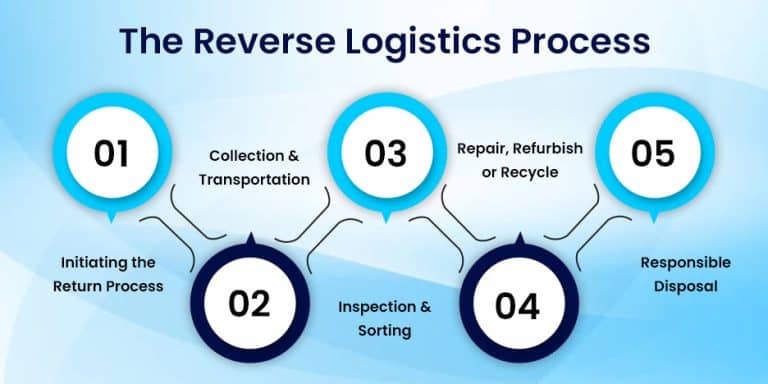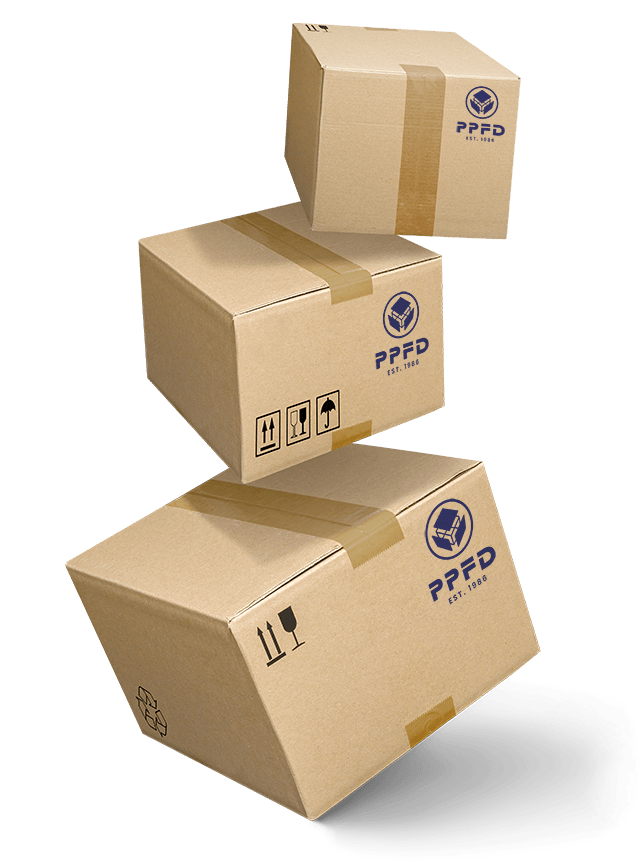
We all love online shopping because it lets us stay home and have products delivered right to our door. And the best part? If something isn’t worth the money, we can easily return or exchange it without even stepping outside.
But have you ever wondered what really happens after you send something back to a store? For us, it is just a simple process, but behind the scenes it is different. There is a whole world working to get that item from your doorstep back to where it came from. This is where reverse logistics comes in.
It’s the system that handles everything after a product leaves your hands, including
Organizing pickups
Checking the condition of returns
Sorting items for resale, repair, or recycling, and
Making sure nothing is wasted
We’ll take a closer look at the journey your return takes, and why it’s more important than you might think. But first, let’s start with the basics.
Reverse logistics is basically the part of the supply chain that deals with what happens when products move backwards—from the customer back to the seller or manufacturer. This usually happens when you return something you bought online, or when a company needs to recycle or repair an item.
For example, imagine you order a pair of shoes online, but when they arrive, they don’t fit. You decide to return them. The process of sending those shoes back to the seller, checking their condition, and either putting them back on sale, repairing them, or recycling them, that’s all part of reverse logistics.
To understand how returns are handled once they reach a facility, check out All You Need to Know About Warehouse Management.

When it comes to reverse supply chain, you’ll come across the “3Rs” – Reduce, Reuse, and Recycle. These are not just some random terms, but the backbone of making returns and product life cycles more sustainable.
Reduce – Here it conveys the main idea of using a few materials and resources from the beginning. Be it making, packing, or shipping products.
Reuse – Then comes reuse, where instead of disposing off things, they look for ways to reuse the products. That could mean repairing, refurbishing, or remanufacturing items.
Recycle – When an item reaches the end of its life, recycling steps in. Here, the materials are broken down to come up with something new.
The different kinds of reverse supply chain are –
We all know about this one. When you request for the return of an item that didn’t fit, wasn’t what you expected, or it was damaged, that returns management in action. The company takes it back, checks its condition, and then decides whether to restock it, repair it, or dispose of it responsibly.
At times, used or returned products are not thrown away, they are reused. For example, electronics that are cleaned up, repaired, and sold as “refurbished,” or car parts that are rebuilt to work like new. This is what helps in cutting down on waste and saving resources.
The reality is – not everything can be reused as it is. So, this is when the products are taken apart so that their materials, including plastics, metals, or glass can be recycled and are used in making something from scratch.
There are instances when products just don’t sell. This is when retailers send them back to the manufacturer or distributor. And instead of the products gathering dust, these are resold elsewhere.
Ever notice how some companies ask you to return packaging or offer reusable containers? That’s packaging management. It’s all about reusing or recycling packaging to cut down on waste.
There are also cases when the deliveries don’t make it to the customer. It could be because of the wrong address or there was no one to collect the package. In these cases, products are returned to the sender and the process starts over
When leased or rented products (like equipment or vehicles) come back at the end of their contract, companies inspect, repair, and either rent them out again, resell, or recycle them.

This reverse supply chain process follows a series of logical steps. Here’s how it works:
We have all been there when the product received didn’t turn out to be as good as expected. Instead of letting it go unused, we mostly decide to return it. Little do we know that this simple decision could set everything in motion.
You contact the store, and they guide you through how to send your item back. This is the first step in giving your product another chance, either for someone else to use or to be recycled into something new.
Once the pickup is approved, someone comes to collect the item from the customer’s doorstep or they are asked to drop off at a return centre. From there, it’s shipped back to a warehouse or facility that handles returns, often using systems like Pick and Pack Fulfillment to sort and ship items efficiently.
When the item arrives, it’s checked to see what shape it’s in. Is it still new? Can it be fixed? Or is it only good for recycling? Based on this check, the product is sorted for its next step—restocking, repair, refurbishment, or recycling.
There are chances when the product can be repaired. In this case, the item is handed over to the right team. Another option they opt for is, they recover and recycle the valuable parts so nothing is wasted.
At last, all the items that pass the inspection stage are put back on sale, get sold as refurbished, or be responsibly recycled. However, all those things that cannot be recycled or reused are disposed of. But the good part is, even then the aim is just one –minimizing the environmental impact.
Reverse logistics isn’t just about sending products back, it’s a win-win for businesses, customers, and the planet. Here’s why it matters:
When companies handle the returns efficiently, they are sure to cut down on costs. By reselling, repairing, or recycling returned items, businesses easily recover value from products. If these options weren’t there, there would have been a lot of waste. This also means less money spent on storage, transportation, and disposal.
Who doesn’t want returns to be quick and hassle-free? Where there is a smooth, effective logistics process, customers can expect their exchanges or refunds faster. This further builds trust and keeps customers coming back.
Reverse supply chain is not only beneficial for humans but for the environment as well. By following the 3Rs, companies reduce waste and make use of fewer resources. This is what makes the entire supply chain more sustainable.
Companies known for easy returns and responsible recycling stand out. Customers notice when a brand makes returns simple and cares about the planet, which can lead to a stronger reputation and more loyal shoppers
Efficient reverse logistics gives businesses a clearer picture of what’s coming back and what can go back on the shelf. This means better inventory control, less overstock, and fewer losses from unsold goods
So, next time you click that “return” button or drop off a package for a refund, remember—it’s not just a simple back-and-forth. There’s a whole network of people, systems, and smart solutions working behind the scenes to give products a second life, cut down on waste, and make shopping better for everyone.
Reverse logistics is quietly shaping a future where convenience and sustainability go hand in hand. It’s about more than just fixing mistakes or dealing with unwanted items; it’s about making sure nothing goes to waste and every resource counts.
As shoppers, we have the power to support brands that get this right, and as businesses, there’s never been a better time to make returns part of a smarter, greener supply chain. In the end, reverse logistics isn’t just a process—it’s a promise to do better for customers, companies, and the planet.
Several factors can impact reverse logistics. The volume and condition of returned items are significant, as well as how effectively a company tracks and processes these returns. Additionally, external factors like market demand and regulatory requirements can also influence the process.
Companies can address challenges in reverse logistics by implementing advanced tracking systems for returned items and maintaining accurate inventory levels. Automating inventory and warehouse management processes can also help streamline operations and improve efficiency.
Key barriers to effective reverse logistics include difficulties in tracking and tracing returned items, high shipping and storage costs, and a lack of established policies and procedures for handling returns efficiently.
Customer expectations significantly influence reverse logistics. Shoppers today expect a seamless and hassle-free return process. Companies that can meet these expectations by providing clear return policies, quick processing times, and responsive customer service are more likely to retain customer loyalty and satisfaction.
Reverse logistics can have a positive impact on sustainability by promoting the reuse and recycling of products. By efficiently managing returns and minimizing waste, companies can reduce their environmental footprint and contribute to more sustainable practices within the supply chain.
Share :
get started
Our team is eager to partner with you and show why PPFD is the go-to choice for businesses aiming to streamline their logistics and distribution.
